Part 3: Film School in the Summer of ’69
But first there was a little detour: summer film school in The Hamptons.
The hype for it was off the charts. Ads were placed in the terminally hip Village Voice. Posters proclaiming the summer session’s hipness, grooviness, and trendiness hung on campus kiosks all over the Metropolitan area. Back then, posters had tremendous pulling power. They played up Bud (whose last name I can’t for the life of me remember) The Instructor’s connection to the “Warhol Factory” — the ne plus ultra [last word] in experimental cinema.
I’d seen some Warhol films, like the dual-screen Chelsea Girls, which I took in when I was supposed to be performing trigonometry calculations in Study Hall but had opted to take in the arts at the New Cinema Playhouse on 12th St. instead.
When I found out that the World’s Greatest Film School was actually coming to my Southampton stomping grounds, spending the summer of ’69 back in the burbs wasn’t an option. My parents were actually pleased: seeking additional credit hours demonstrated “initiative.” I thought cutting school and immersing myself in Manhattan’s cultural melting pot qualified as initiative too, but I kept that thought to myself.
Little did Mom and Dad suspect the depth and breadth of debauchery their pride and joy was in store for. The exquisite sampling of urban and suburban counterculture-types who signed up would be housed in Merrimack, a campus dorm — predating MTV’s Cribs by about thirty years.
On the first day of class we went around the room introducing ourselves, adding a little backstory about what prompted us to sign up. You know, stuff like I want to be the next Fellini or Elia Kazan. All participants seemed well-pleased with their social and artistic prospects.
A sense of excitement was in the air. However, it wasn’t long before we started getting the sneaking suspicion that none of us would touch a 16mm camera that summer (read on). First off, you need someone to show you how to work a camera, like an instructor who actually shows up for class, and, come to think of it, you need an actual camera before an instructor can show you what to do with it if they actually showed up for class. So far we were 0 for 2.
The Warhol Crowd
On the bright side, it was becoming equally apparent that Bud The Instructor’s connections to the Warhol crowd and the Warhol “Factory” were the real deal. As time went on, the latter began making up for the former: the world-class decadence on offer was off the charts.
You won’t mind if I describe a little world class decadence, would you?
Bud got the ball rolling with a welcome party at, where else, the college windmill. The evocative structure with its weathered wooden shingles and queer levered blades had been reimagined into a party pad constructed around a circular staircase. The structure’s nooks, crannies, and alcoves were perfect for conversations with special strangers. Strategically-placed windows peeked out through the windmill blades to the vast blue beyond.
The Warhol crowd was out in full force! Hunks like Joe Dallesandro and identifiable “superstars” like Nico, Ondine, and Gerard Malanga made the scene, mingling with students and high society types alike who “summered” in the area. The most breathtaking women I’d ever seen were perched on the stairway, clad in the most outrageous sixties mod styles and makeup imaginable.
Now, when you’re 17-years-old and you don’t have the vaguest idea what a “drag queen” is cause you never heard the term in your antiseptically safe suburb, it’s easy to form the wrong impression. One of the older students hipped me to what a “tranny” was before I made the discovery more spectacularly.
Our eager film class was duly impressed that our, ahem, “teacher” had summoned that magnitude of star power at a moment’s notice. The fact that Bud The Instructor didn’t show up for the next morning’s class impressed us a different way. That qualified as strange. But, hey, we were young, good-looking, and up for romping around a summer paradise. Fending for ourselves for an afternoon out on the dunes was the type of assignment we handled well enough.
With or without cameras, instructors, or a curriculum, reminders of the Warhol connection kept on coming.
As it developed, in the Summer of ’69, some of us weren’t just going to party with Andy, Edie, and other select 15-minutes-of-fame Warhol “superstars:” we were actually going to appear as extras in The Factory’s productions.
That would be how and why one perfect hormone-drenched day in Bridgehampton I found myself hired as an extra for a little cinematic excursion titled School Play. It starred Brigid Superstar née Polk. Warhol biographers often credit her for coming up with the word “superstar.” Pay was fifty bucks a day, all the Perrier you could drink, and all the high-end deli you could wolf down. My role: playing a spear-carrying native. It didn’t require “method” training at the Stella Adler School of Drama that produced Marlon Brando.
In the climactic scene, we natives throw — or should I say wrestle — the corpulent superstar into a big pot. My fellow Pascack Hills escapee John who was in The Hamptons visiting got swept into the film too. Little did he know he was about to attain immortality: it was his crotch the chubby porker grabbed as she boiled alive in the pot.
It’s true that not every poteconomist has played a cannibal in a Warhol film.
My performance wasn’t exactly Charlton Heston in Ben Hur, but, hey, a film credit’s a film credit.
By the end of July, Bud The Instructor had stopped showing up for class altogether. Yet the succession of arty-farty and celebrity-rich parties we heard about and attended through his grapevine was never-ending. We “made the scene” at soirées fit for a Nero or a Caligula at various and sundry beach houses, mansions, and artist colonies.
Collective astonishment over our film teacher flaking so blatantly combined with a sense of comraderie that developed after attending the last twenty parties en masse: our class had bonded in Bud’s absence.
Ready for the next adventure, 8 of us got together and rented a beach house on Peconic Bay for the month of August. The cast consisted of four hot guys and four hot chicks. Two to a room — or at least that’s how the arrangement started.
Oh, Carole
21-year-old Carole was one of the housemates. More specifically, she was one of the housemates I really wanted to … get better acquainted with. Fortunately, the ravishing brown-eyed Jewish intellectual chick from the Fashionable Upper East Side [of Manhattan] was easy to be around.
With the free love era in full bloom, Carole was hooking up with the dashing Frenchman, Arnaud, a Francois Truffaut lookalike, and the accomplished cocksman Saul Simonson, an ultra-confident hashish dealer who tooled around the beach paradise’s dunes, sandy lanes, and swinging hot spots in his 1955 classic Morgan convertible notable for its rakish leather “bonnet belt.”
Those are just the guys I’d seen her with and knew about it.
By that time I was making my own contributions to the free love era, yet the prospect of exchanging more than pleasantries with an earth angel like Carole were pretty far-fetched.
One early August day our group heard that The Who, who I adored, were going to be playing Tanglewood, an outdoor music festival up in Massachucetts.
About five of us, Carole included, piled into a Dodge Dart for the scenic drive.
Carole had seen some of same Who shows at The Fillmore East that I had. She was up for the show, too. Flamboyant drummer Keith Moon was her favorite Who member. She told me that she loved the expressive faces he made when he pounded his skins.
When we arrived in The Berkshires, Carole and I wandered Tanglewood’s romantic gardens until it was showtime. Feeling bold, we sat ourselves down second row center, intending to stay put until the rightful ticket holders showed up to claim their seats.
During The Airplane’s opening set, no one did. So far so good!
Tension mounted as Brit roadies began hauling Moon’s monstrous drum kit and Pete Townsend’s ominous Hiwatt stacks out from the wings onto the stage. The stage lights faded into a cool indigo glow.
Then the crack rock outfit was launching into its signature medley, “Heaven and Hell” segueing into “I Can’t Explain.”
We were still sitting second row center — and quite giddy about it.
Once we realized that no one was coming for the seats, the show became “a total rush.”
Things were friendly enough between us in the back seat as we made the best of the four-hour ride back to our summer house on the bay.
The best ever August
The best August ever continued. Our lawn ended where the bay began, a perfect setup for discovering the joys of clamming. You waded out thirty yards or so, dug your toes into the sand, and felt around for clamshells. It didn’t take long to fill a couple of buckets. Then you could sell the lot to swank local dining spots for 14 bucks a bucket. 14 bucks bought a couple of “nickel bags” [five bucks worth of marginal weed] and a sub sandwich at Uncle Milty’s out on Sunrise Highway. What more could a guy want? Well, there was something, and it was heading my way.
The middle of the month was significant for an epic social phenomenon you may have possibly have heard of: Woodstock. Cultural anthropologists point to it as the defining event of the hippie era. Well, back then I was a hippy and now I’m a cultural anthropologist, so I can concur that it was — or at least it was for the next few months.
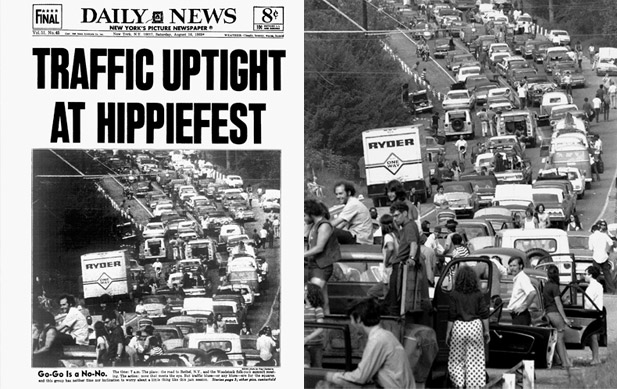 That November, when Woodstock met its match, as luck would have it I was at that epochal event, too. But I’m getting ahead of myself.
That November, when Woodstock met its match, as luck would have it I was at that epochal event, too. But I’m getting ahead of myself.
In the interest of brevity, I’ll strip my Woodstock experience down to the bare essentials:
- In the summer of ’69, unlike most archetypal hippy types living in Indiana or wherever, in the weeks prior to the “Three Days of Peace and Music” I wasn’t exactly hurting for entertainment. I’d already seen most of the headlining acts at The Fillmore East. Plus I’d made that recent pilgrimage to Tanglewood. In other words attending the festival was less of a priority for me than it was for most of “Woodstock Nation.”
- On Friday, as the epic weekend began, I was home visiting my folks in River Vale. I’d barely seen them all summer and truth be told was feeling a tad guilty about it. Reports about how huge and wondrous Woodstock was started trickling in. They began increasing in frequency and intensity as the crowd size swelled. By all estimates there was a surreal scene, going on up in New York state — history-in-the-making was within driving distance. I still resisted the temptation to go.
- Come Saturday, Woodstock was being widely hailed as the serendipitous event of the century. The expected crowd of 50,000 had swelled to ten times that amount. Promoters had thrown up their hands and declared it a free festival. Free or not, as the day went on, I was still on the fence about going.
- Finally, resistance was futile. Around 10 PM, my friend and fellow cannibal John who’d became immortal in School Play came to the conclusion that we’d never forgive ourselves if we didn’t go. Now that we’d committed, we set off for wherever the Woodstock festival was in his Austin-Healy Sprite (there were a lot more English imports back then).
- In 1969, few if any seventeen-year-old kids from River Vale, NJ had the foggiest idea where Woodstock, NY was. That’s why an hour after we set out we found ourselves crossing the Tappan Zee Bridge, proceeding due East toward the wrong side of the Hudson River. Suddenly, it dawned on us that we were going the wrong way, an error that would surely take us about twenty miles out of our way. Somehow noticing a police turnaround, John made the world’s quickest U-turn in the middle of the bridge! The brilliant maneuver went under-appreciated by the drivers behind us who desperately slammed on their brakes; oncoming cars we we cut in front of us were forced to do likewise. Screeching, head snapping, and evasive maneuvering ensued. The resulting adrenaline rush insured that the trip was already legendary — although we were only an hour into it and nowhere near the festival.
- Back on course, or so it seemed according to our wrinkled foldup map which wasn’t exactly overly detailed, eventually we made our way to what we believed was the general vicinity of Woodstock — only to recall the event was being held at some hole in the wall called Bethel because the City of Woodstock had backed out at the last minute. Trying to find a farmer awake at 1 AM to ask directions to Yasgur’s Farm in Bethel was sufficiently daunting.
- After making one wrong turn after another, at last we received a signal that we were getting warmer. Confirmation came as the lonesome two-lane country road we were traveling on gradually transformed into a four lane parking lot. Things appeared completely impassable. Anyone in their right mind would have stopped right there. But the road wasn’t quite as impassable as it looked. Maniacally maneuvering the minnow-sized Sprite through miles of parked land yachts in little sideways darts and bursts, John zig-zagged through the maze of sheet metal … until there really was absolutely nowhere left to go.
- Now it was 3 AM. We’d abandoned the Sprite and then we were walking … and walking … and walking … toward the festival. Finally, around 5 AM, I identified the signature power chords of Peter Townshend and The Who in the distance. We joined the vast throng just in time for Tommy‘s majestic “See Me Feel Me Touch Me” climax.
- The thirty minutes we heard — the end of Tommy and a few encores — was fantastic. The Who smashed their gear as they left the stage to thunderous applause.
- At that point, a few logistical problems associated with sticking around for the next act and the last day of the festival reared their heads. Torrential rains had turned the place into a mudbath for 500,000 which is why The Airplane was preparing to go on at 7 AM instead of their scheduled 11 PM slot. We were beyond exhausted. It hadn’t even occurred to us to bring a tent or sleeping bags. We had no food. And we had no water. People all around us were tripping out of their minds — we hadn’t discovered that yet — it threw us for a loop.
- Retreat seemed like the only sensible option. We did, retracing our steps back to the Sprite, squirming back through the five-mile parking lot, steadfastly negotiating our way onward, back to the burbs of northeast “Joisey” where I found my Dad at his usual post attacking his 3,467th consecutive breakfast of Rice Krispies ‘n milk at the kitchen table. The look he gave me was priceless.
So, yeah, I was at Woodstock — for about thirty minutes!
Back at the summer house on Peconic Bay, things were getting more and more electric with Carole. There were stolen kisses in the dusk as fireflies pulsed all around us, progressing to heavy makeout sessions under the stars. What a wonderful world it can be!
Around August 23rd or so, Carole had a surprise for me: her well-off liberal parents were “doing Europe” and I was officially invited to spend a few days with her at at their “happening pad” on the Fashionable Upper East Side. The salt water air must have really gotten to her.
We rode the LIRR to Penn Station, then taxied over chez Carole. A doorman let us in. An elevator man took us up to a “classic six” (rooms) pre-war apartment decorated with Eames loungers, a Saarinen table, and paintings belonging to a genre I recognized as “Op Art” from my many excursions to MOMA [Museum of Modern Art]. I’d developed an appreciation for “cul-cha.”
The Graduate
It looked like I was in.
But I was still a bit hesitant, still a little bit in disbelief that I was shacking up with a sexy cosmopolitan sophisticate. It was hard to forget Carole was four years older than me; that factoid both intimidated me and ratcheted up the excitement.
Things started off slowly. Being “film students,” we talked about about how how great it would be if we could get in to see the summer’s white-hot film, The Graduate. You could tell from the posters that it was one of the more erotic films Hollywood had produced to that point.
The Graduate was such a smash there wasn’t much chance of scoring a ticket. We cabbed over to The Coronet theater on Third Avenue anyway. The same fates that drew us closer at Tanglewood weren’t done with us yet; the last two tickets were reserved for us.
The house lights dimmed. The film began. The pairing of Benjamin, who was worried about his future, and Mrs. Robinson, who had some practical ideas how to enhance his present, was “instructive” to say the least. If you couldn’t fall in love with the Simon and Garfunkel soundtrack, you were deaf or dead. The Graduate’s Buck Henry screenplay offered some of the best lines of all time: “I have one word for you: plastics;” and “Mrs. Robinson, I think you’re trying to seduce me.” The promised eroticism was delivered in spades. All in all it was a memorable night at the movies.
Back at the classic six, even a slower student like myself, enrolled in a film school that didn’t exist, managed to fake the role of Benjamin capably enough. After all, I was a film veteran — I’d been in School Play, hadn’t I?
Reality intrudes
The following morning there was a voice in my head that wouldn’t go away. It was telling me to call home. For the life of me, I couldn’t figure out where that was coming from. I mean, what kind of nebbish calls his mom from a woman’s apartment while he’s still there?
Nonetheless, I dialed the familiar digits on one of the black rotary phones every NYC apartment seemed to have back then.
Connie Kohn picked up on the first ring. She was agitated to say the least.
“Where are you?”
“I’m in The City … with a friend.”
“What are you doing there? You’re supposed to be in Washington DC!”
“What?”
I was supposed to be in Washington DC? What was she talking about? I was speechless. It was like August 25th. Southampton College had started the first week of September. I figured I had at least a week of summer fun left before the school year began at American University, if not two.
Boy, had I figured wrong!
Next thing I knew, mom announced she was on her way into The City, to Carole’s apartment no less, to pick up her embarrassed-beyond-words spawn. I was about to be plucked away from the best summer ever with another week left on our house rental — not to mention the rest of the weekend I was supposed to spend at the Classic Six with my Mrs. Robinson..
Gulp.
Presently a buzzer blared and my mom walked into the prewar apartment. Let me put her entrance in perspective: I was in Carole’s parents’ apartment, but, at the moment, the only parent there was my mom. There was something seriously wrong with that picture.
A few hours later I was staring at an untouched Hojo hot dog at an I-95 Service Area somewhere in Delaware.
This is not happening.
Delaware gave way to Maryland. Unwashed, without a wink of sleep, my thoughts a blend of last night’s sensations coupled with a sense of dread and foreboding that was impossible to suppress. Inexorably, the family station wagon proceeded south down the Beltway to the District of Columbia.
{Note: Perhaps it’s making sense why I set the time machine for Spring, 1968? That was necessary to establish my state-of-mind as I found myself in DC in the Fall of 1969. I trust the detour wasn’t too dreary.}
Next: dazed and confused in DC.
Table of Contents:
Part 1: IntroductionPart 2: How I Got to D.C.
Part 3: Film School in the Summer of '69
Part 4: Arrival in our Nation's Capital
Part 5: Metromedia
Part 6: Caught in a Vortex — The Vietnam Protests
Part 7: Aftermath

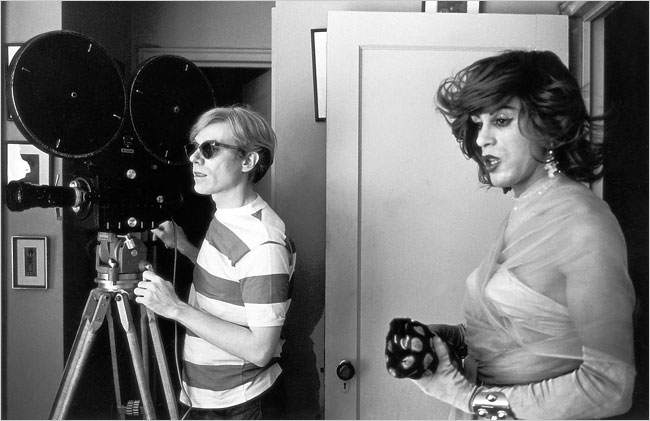
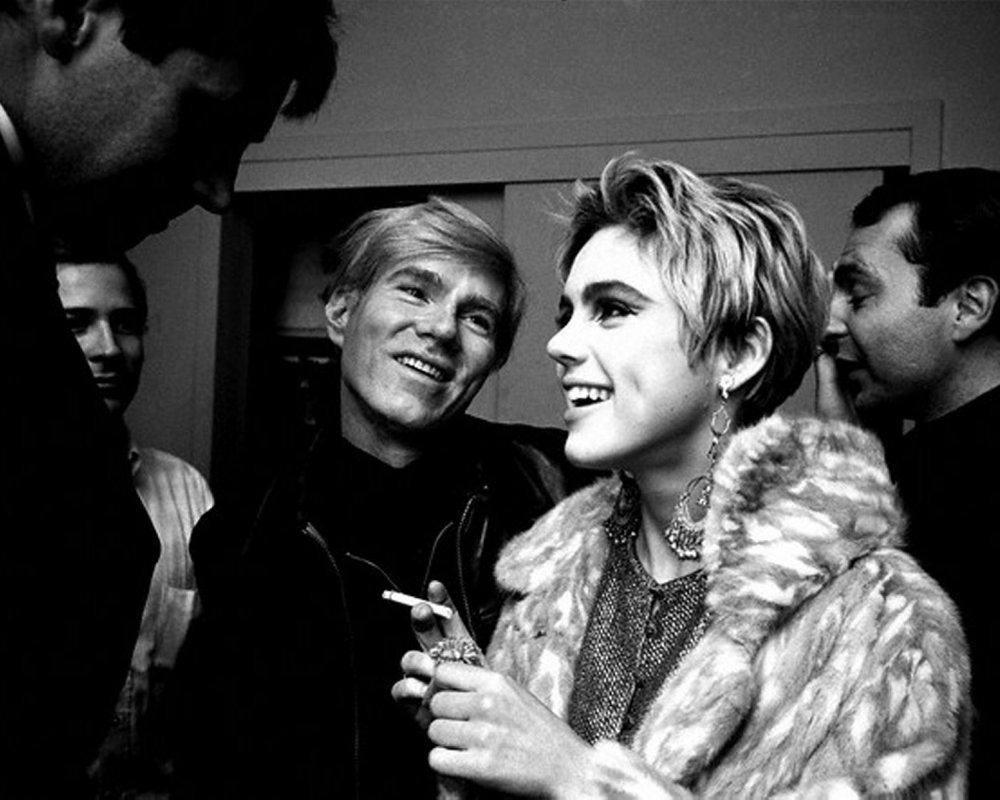

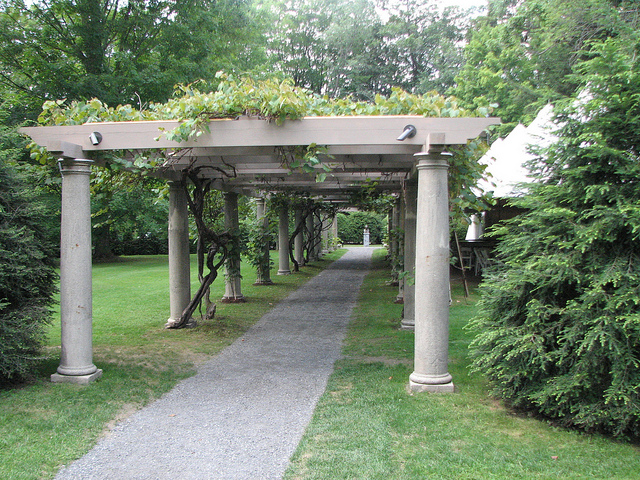

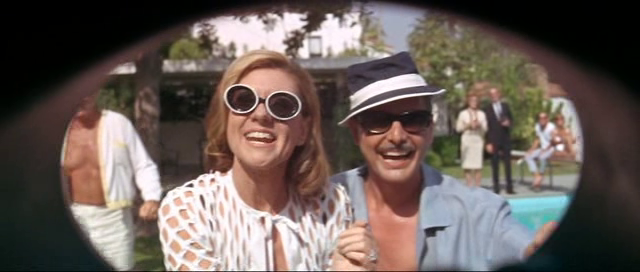





1 comment
Dr. Beth Fisher says:
Aug 8, 2013
Looking forward to reading the rest!